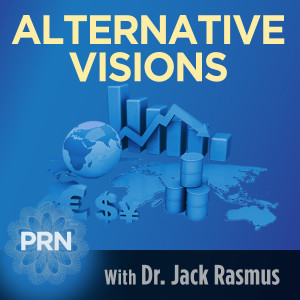
The first part of today’s show reviews the latest developments in the US-China mini-trade deal negotiations and latest snapshot of US economic manufacturing, investment, and retail sales-consumption. Thereafter
Dr. Rasmus continues the analysis of Neoliberalism in crisis topic of last week, explaining how Obama failed to restore it to full effect in the wake of the 2008-09 crash and how Trump represents the attempt to restore it in a new, more virulent 2.0 form. The fundamental main policy propositions of Neoliberalism are restated and how Trump has fared to date in each area are addressed. Big success by Trump in restoration have occurred in business-investor tax cutting and increases in war-defense spending, but failure in social program spending cuts and containing escalating deficits and debt. Trump industrial policy has also been successful, with deepening of deregulation, privatization, continued wage compression, benefits cost reductions, and other areas. Neoliberal monetary policy of chronic low interest rates remains a work in progress as Trump fights the Fed over rate reduction but the Fed slowly falls in line. Neoliberal ‘External’ policy (trade, currency exchange rate, FDI money flows) represents Trump’s major failure at restoration, however, as the trade war produces little result and reduces investment and growth globally and increasingly as well in the US. (A more complete analysis is available in Dr. Rasmus’ just released book, ‘The Scourge of Neoliberalism: US Economic Policy from Reagan to Trump’ available on his blog, jackrasmus.com, along with recent articles on the topic). Next week: the material forces at work undermining a restoration of Neoliberalism under Trump and his successors.
More Episodes
 2023-11-24
2023-11-24
 1.1k
1.1k
 2023-10-30
2023-10-30
 827
827
 2023-10-16
2023-10-16
 906
906
 2023-09-18
2023-09-18
 742
742
 2023-09-11
2023-09-11
 647
647
 2023-06-12
2023-06-12
 811
811
Create your
podcast in
minutes
- Full-featured podcast site
- Unlimited storage and bandwidth
- Comprehensive podcast stats
- Distribute to Apple Podcasts, Spotify, and more
- Make money with your podcast
It is Free
- Privacy Policy
- Cookie Policy
- Terms of Use
- Consent Preferences
- Copyright © 2015-2024 Podbean.com





